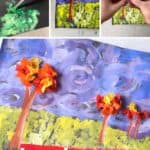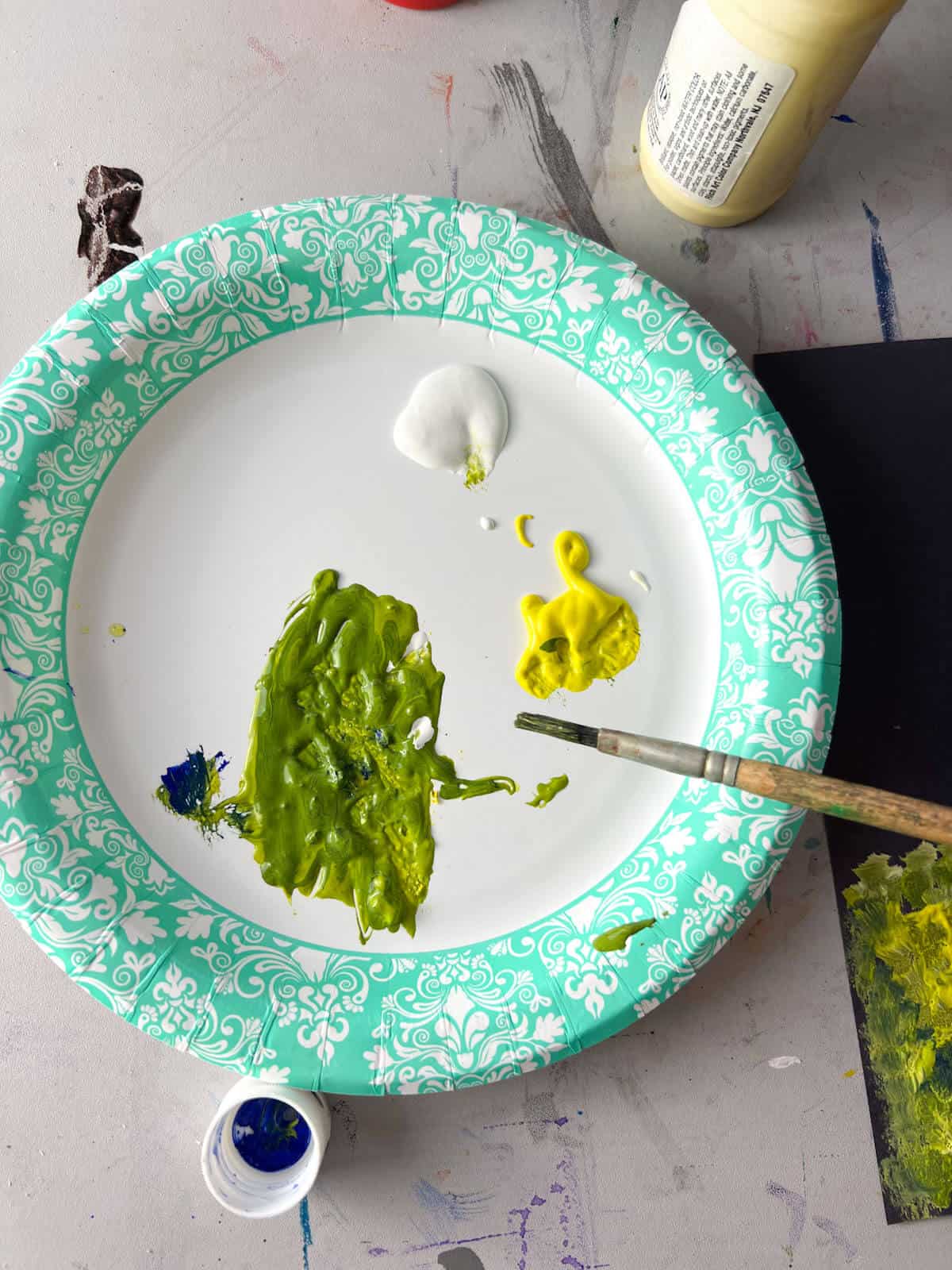Easy Textured Landscape Painting Idea For Beginners
Are you looking for a fun and easy textured landscape idea? This art project is perfect for children and beginners to try. Add your own twist to this easy textured landscape painting idea.
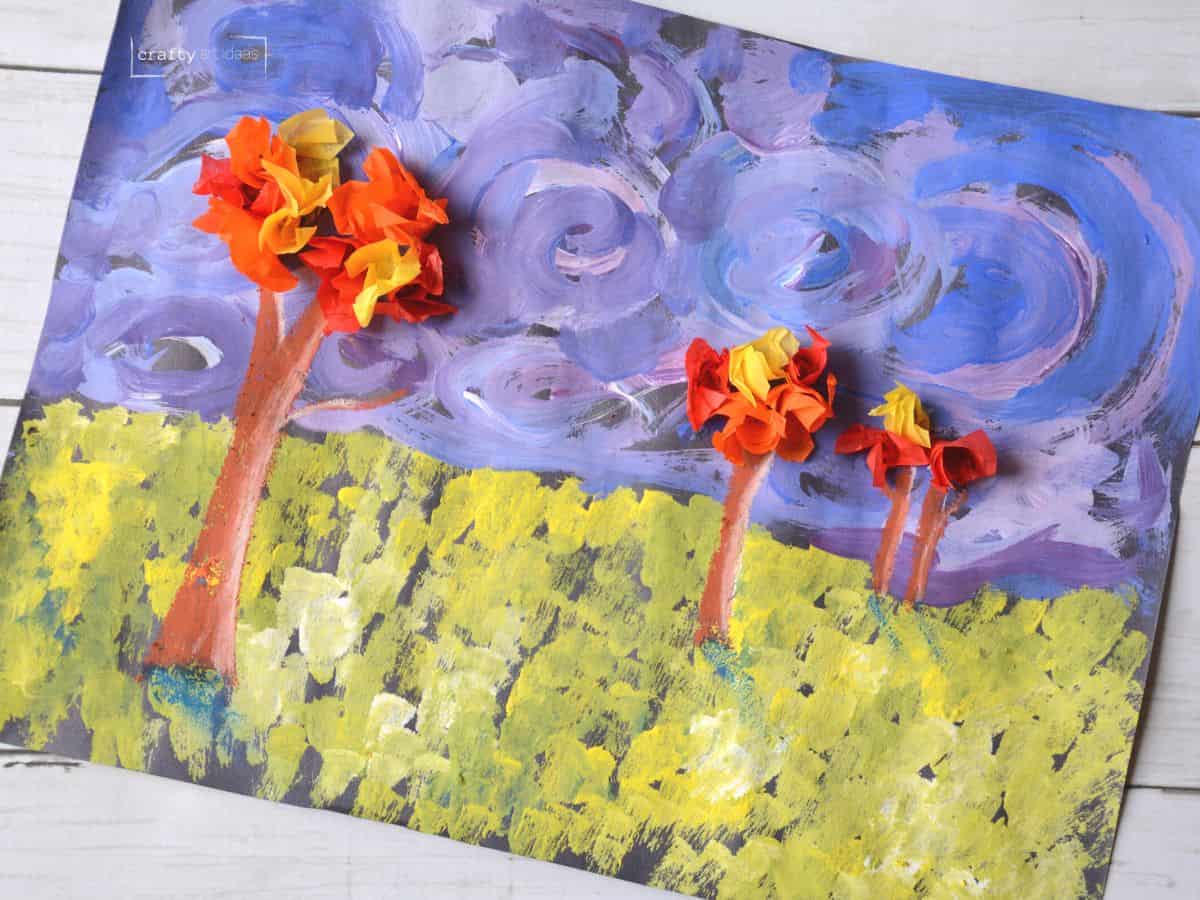
Recommended Supplies
- Tempera Paint in the following colors: green, yellow, blue, purple, white, brown
- Pencil
- 9″ x 12″ or 12″ x 18″ Black Tru-Ray Construction Paper
- Paint Brush (stiffer brush works best)
- Paint Trays or Palettes
Optional Supplies
- Warm Colored Tissue Paper for trees or Warm Colored Tempera Paint
- Glue (if making textured tissue paper trees)
- Black, blue or violet chalk pastel (if you want to add cast shadows)
What age is this lesson appropriate for?
The examples you will see are from second graders (ages 7-8). Like any of our lessons, this painting can be modified to become more advanced artists or simplified for younger children.
Get another fun tree painting idea here inspired by a different famous artist.
How To Explain Texture
The art element of texture is pretty easy for children to understand. In art, it is how something feels or appears to feel. Look at a variety of paintings and ask children to tell you how they think it feels to fully understand that it can just appear to feel a certain way.
Textured Landscape Art Lesson
Artists To Look At First
We love using famous artists and artwork as inspiration for our projects. You will be amazed at the discussions and questions young artists will have.
- Vincent Van Gogh: we love watching this Art with Mati and Dada with children and looking at his artwork to discuss the different textures and feelings they see. There is also a Brian Pop Jr. on Vincent Van Gogh.
- Claude Monet: discussing his expressive brushstrokes and textures is a great place to start your conversation. There is a 20-minute getting to know Monet cartoon kids like. Here is another great Monet art project you could try as well.
- Erin Hanson: a contemporary artist who uses bold colors and textures in her landscapes.
For this texture landscape lesson, we are going to paint a fall scene. However, you could modify this art lesson to be any time of year depending on the trees or other colors you chose to incorporate.
Step 1: Draw Horizon Line
Add a light horizon line on the black paper. It can be straight or slightly wavy.
Step 2: Dab Paint For Grass
Place green, yellow and white tempera paint on a paint tray or palette. You will not give students water. Demonstrate how to pick up two different colors on the brush to dab textures for grass.

Continue until the whole grass is filled with different greens. You will be amazed at the different colors and tints your students will get. The goal should be to fill the whole space below the horizon line.
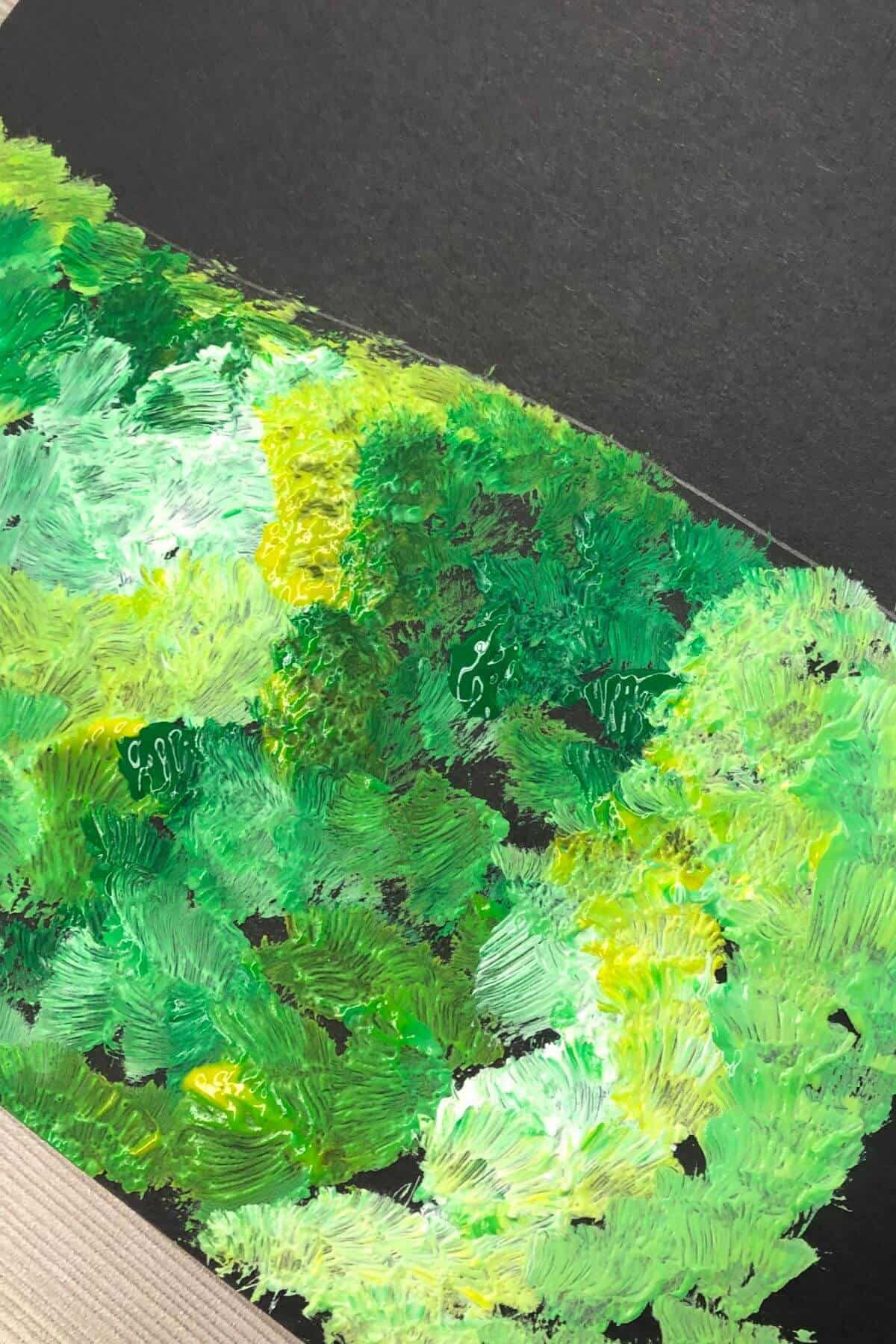
Step 3: Paint Swirls In The Sky
If doing this in the art classroom, then this would be done once the grass has dried. You can do this step without the grass drying, but you have to be careful.
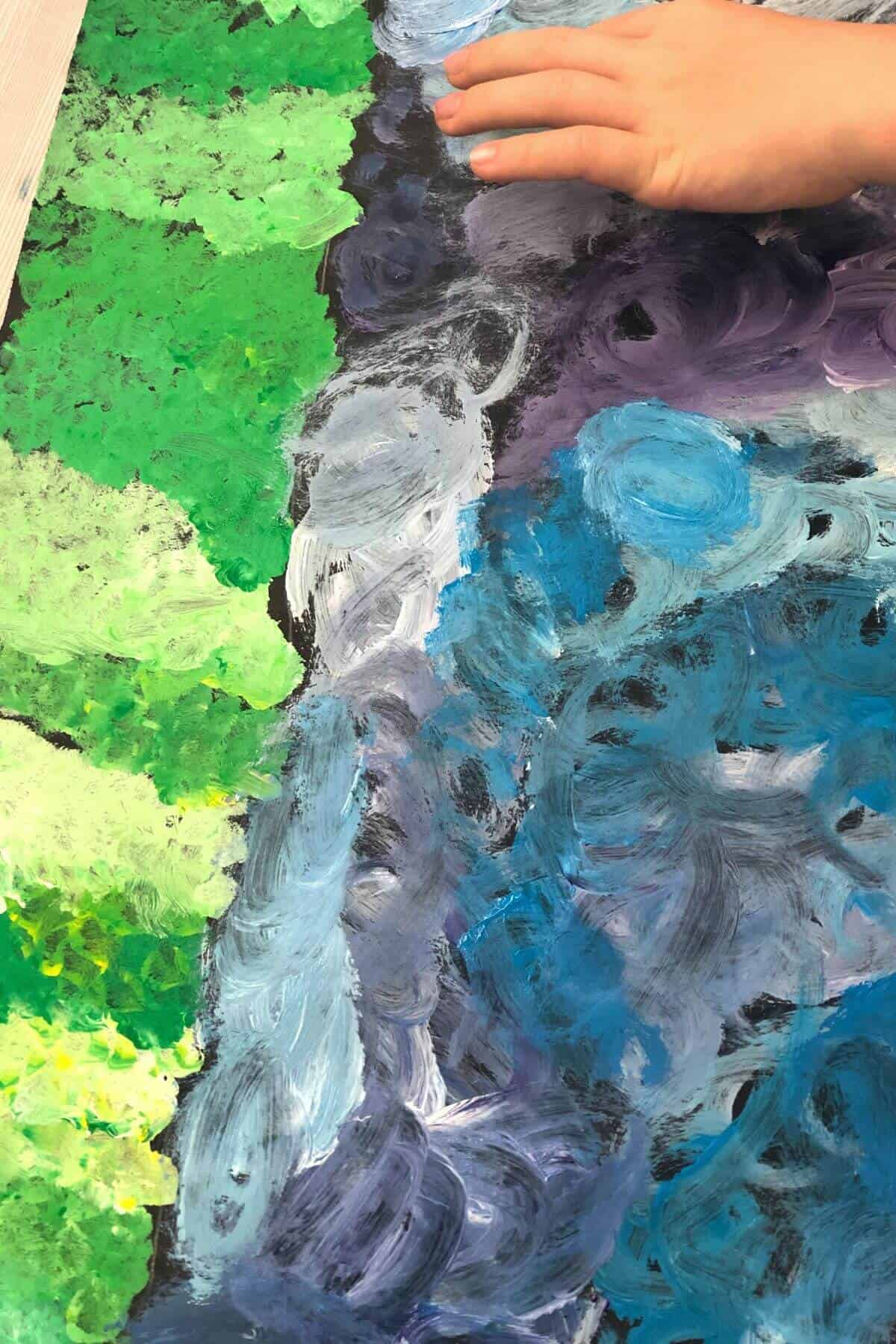
Start with separate blobs of violet, blue and white on a paint tray. Dip your brush into different colors and swirl in the sky. You can leave some black or really fill the sky with paint.
Step 4: Let Painting Dry

Step 5: Paint Or Draw 3 Tree Trunks
You can draw tree trunks with brown oil pastels or paint 3-5 different-sized trunks. This is a great time to explain foreground, middleground and background to students.

Let Trunks Dry
Let the paint fully dry if you painted the tree trunks.
Step 6: (optional) Add Cast Shadows With Chalk
Chalk pastels look awesome on top of tempera paint. You can use a black, blue or purple chalk pastel to add a shadow to the side of the trunk and a cast shadow on the ground.
A little chalk goes a long way and then smudge with your finger.
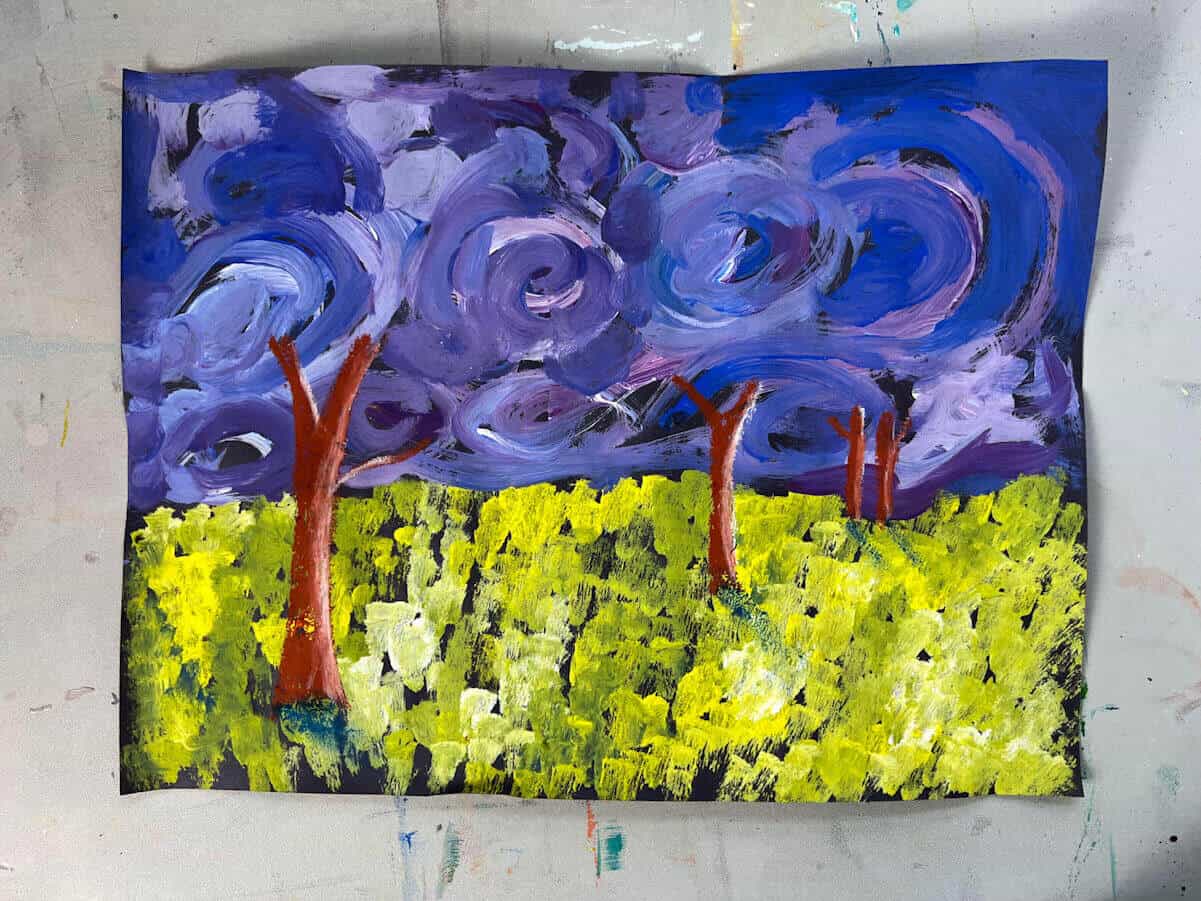
Step 7: Add Warm Color Leaves
With young children, add textured tissue paper leaves to their branches. We show a detailed texture tissue paper heart in this post.

You use a similar process by wrapping a small square of tissue paper around your pencil, dipping it in glue and adding to the project.
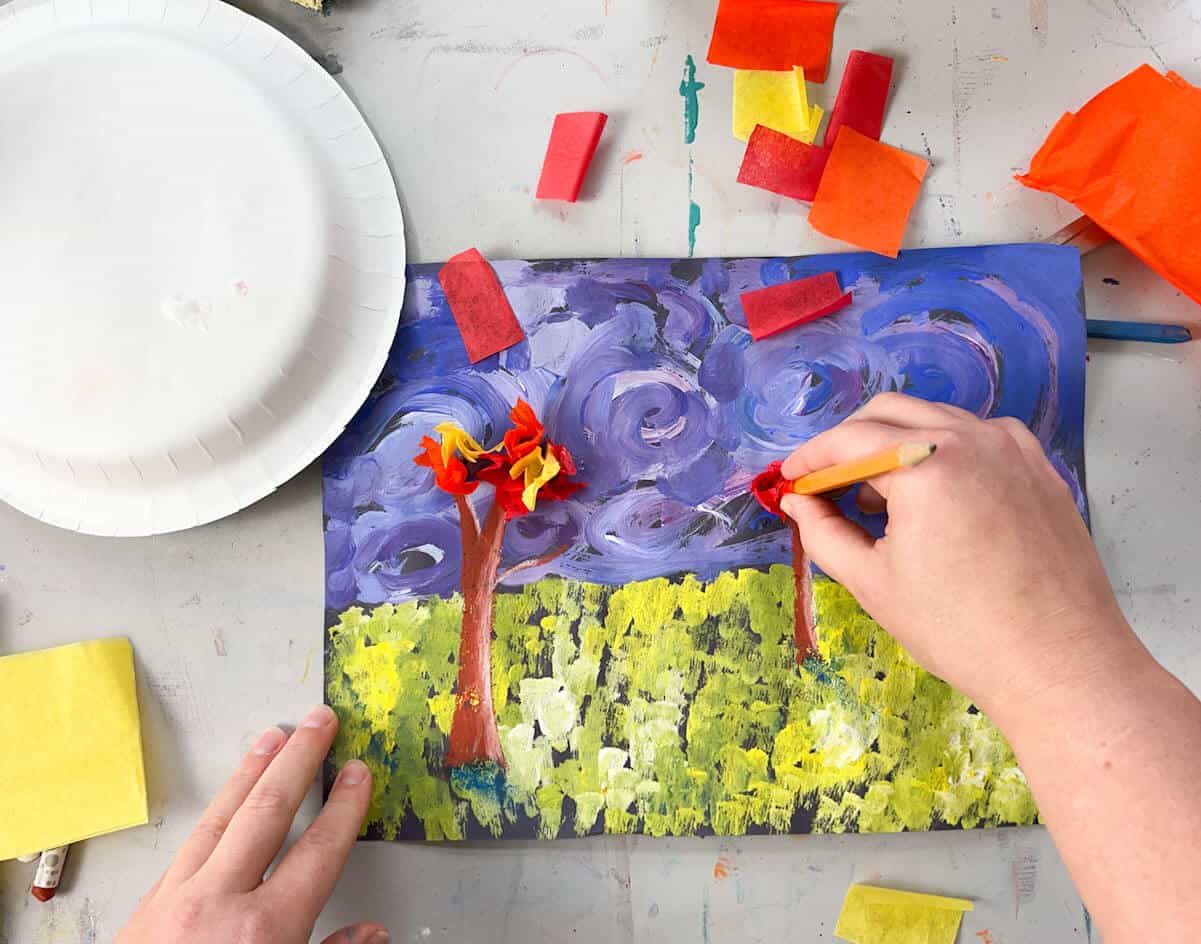
Step 9: Let Dry and Display

These awesome texture landscape paintings are fun for all and all young artists are able to add their own unique touches.

Landscape Painting FAQs
You have to teach kids to understand they cannot mix the separate paint colors on their tray or palette. Encourage them to dip into two colors and use up all that paint before moving on. You can give them a paper towel to dab their brush on as well to help clean their brushes. Do not give them water as you will have a watery mess.
We like the Premier Crayola and even their washable tempera paint depending on the project.
Landscape paintings depict outdoor scenes such as mountains, trees, buildings or other things you naturally see outdoors.
Instead of adding extra texture to your landscape painting with texture, you could stamp warm colors (red, yellow and orange) paint to create your leaves.
More Elementary Art Lessons With Texture
- Chalk Pastel Heart Inspired By Keith Haring & Jim Dine: the final results of these are always awesome and any child will feel successful
- Easy Watercolor and Glue Resist Painting Technique
- Easy Clay Cat Lesson (great for 2nd-5th graders)
Do you like this art project? Please give us 5 stars below 🤩🤩🤩🤩🤩 and have fun being creative with your family.
Follow us on Pinterest, YouTube, Facebook & Flipboard for more free art and craft ideas!
Textured Landscape Painting Idea For Kids
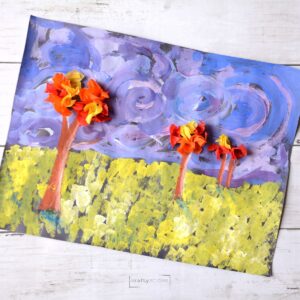
Equipment
- Pencil
- Stiffer Paint Brush
- Paint Tray, Palette or Paper Plate
Supplies
- 1 piece 12" x 18" Black Construction Paper
- Tempera Paint green, yellow, blue, purple & white
- Warm Color Tissue Paper
- Brown Oil Pastel
- Liquid Glue
Instructions
Painting the Grass
- Add a light horizon line on the black paper. It can be straight or slightly wavy.
- Place green, yellow and white tempera paint on a paint tray or palette. Dab textures for the grass after picking up two colors at a time on the brush.
- FIll the whole space under the horizon line.
Painting the Sky
- Start with separate blobs of violet, blue and white on a paint tray. Dip your brush into different colors and swirl in the sky. You can leave some black or really fill the sky with paint.
- Let painting dry.
Adding Trees
- Draw three tree trunks with brown oil pastel.
- Add leaves with red, oragne and yellow tissue paper. Wrap tissue paper around pencil end, dip in glue and stick on project.
Notes
A little chalk goes a long way and then smudge with your finger. Other Tips
- Do not use water to clean your brush. You will not get the same texture feel and kids will end up with watered-down colors.
- Make sure to not mix colors on the paint tray. Children need to understand that if they do that they will not get the variety of colors and tints.

